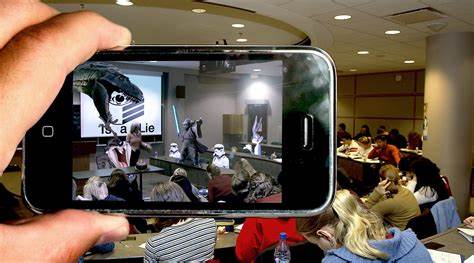Outline of the Article
- Overview of Virtual Reality (VR) and Augmented Reality (AR)
- Differentiating between AR and VR
- Brief history and evolution
- Applications of AR and VR
- Entertainment and gaming
- Healthcare
- Education and training
- Retail and marketing
- Recent Developments in Augmented Reality (AR)
- Advancements in AR hardware
- Integration of AR in smartphones and smart devices
- AR in automotive industry
- Recent Developments in Virtual Reality (VR)
- Improvements in VR headsets
- VR in immersive storytelling and experiences
- VR for remote collaboration and communication
- Challenges and Future Prospects
- Technical challenges in AR and VR development
- Ethical considerations
- Future trends and possibilities
- Conclusion
Introduction to Augmented Reality (AR) and Virtual Reality (VR)
Augmented Reality (AR) and Virtual Reality (VR) are cutting-edge technologies that have revolutionized various industries. Although both technologies provide immersive experiences, their methods are different. AR overlays digital content onto the real world, enhancing our perception of reality, whereas VR creates entirely virtual environments, immersing users in a simulated reality.
Differentiating between AR and VR
AR enhances the real world by adding digital elements such as images, videos, or 3D models, while VR creates a simulated environment, completely replacing the real world.
Brief history and evolution
The concept of AR dates back to the 1960s, while VR gained prominence in the 1980s. Over the years, advancements in technology have led to more accessible and sophisticated AR and VR experiences.
Applications of AR and VR
AR and VR technologies have found applications across various industries, including:
Entertainment and gaming
Both AR and VR have transformed the gaming industry by providing immersive and interactive experiences. Games like Pokémon Go utilize AR to blend virtual characters with real-world environments, while VR games offer unparalleled levels of immersion.
Healthcare
In the healthcare sector, AR and VR are used for medical training, surgical simulations, and patient rehabilitation. These technologies enable healthcare professionals to practice complex procedures in a safe and controlled environment.
Education and training
AR and VR have revolutionized education and training by providing immersive learning experiences. Students can explore historical sites, conduct virtual experiments, and engage with interactive simulations, enhancing their understanding of complex concepts.
Retail and marketing
Retailers leverage AR to offer virtual try-on experiences, allowing customers to visualize products before making a purchase. VR is also utilized for virtual showrooms and immersive advertising campaigns, enhancing customer engagement.
Recent Developments in Augmented Reality (AR)
Recent advancements in AR technology include:
Advancements in AR hardware
Technological innovations have led to the development of lightweight and more powerful AR glasses, making them more accessible to consumers.
Integration of AR in smartphones and smart devices
Major smartphone manufacturers have incorporated AR capabilities into their devices, enabling users to interact with digital content overlaid onto the real world through their smartphones.
AR in the automotive industry
Automotive companies are exploring the use of AR for heads-up displays (HUDs) and augmented navigation systems, enhancing driver safety and providing a more intuitive driving experience.
Recent Developments in Virtual Reality (VR)
Recent developments in VR include:
Improvements in VR headsets
VR headsets have become more affordable and user-friendly, with advancements in display technology and motion tracking, leading to more immersive experiences.
VR in immersive storytelling and experiences
Content creators are leveraging VR technology to create immersive storytelling experiences, allowing users to explore virtual worlds and narratives in unprecedented ways.
VR for remote collaboration and communication
With the rise of remote work, VR platforms are being developed for virtual meetings and collaborative workspaces, enabling teams to collaborate effectively regardless of their physical location.
Challenges and Future Prospects
Despite their potential, AR and VR technologies face several challenges, including:
Technical challenges in AR and VR development
Issues such as latency, motion sickness, and hardware limitations continue to pose challenges for AR and VR developers.
Ethical considerations
As AR and VR become more pervasive, ethical concerns regarding privacy, data security, and digital addiction need to be addressed.
Future trends and possibilities
Looking ahead, the future of AR and VR holds immense potential, with developments such as augmented reality contact lenses, haptic feedback systems, and virtual reality theme parks on the horizon.
Conclusion
In conclusion, Augmented Reality (AR) and Virtual Reality (VR) have emerged as transformative technologies with diverse applications across various industries. Recent developments in AR and VR hardware and software have paved the way for more immersive and engaging experiences. While challenges remain, the future of AR and VR looks promising, with endless possibilities for innovation and growth.
FAQs
- What is the difference between AR and VR?
- AR enhances the real world by overlaying digital content, while VR creates entirely virtual environments.
- How are AR and VR used in education?
- AR and VR technologies offer immersive learning experiences, allowing students to explore concepts through interactive simulations and virtual field trips.
- What are some challenges facing AR and VR development?
- Technical challenges such as latency and motion sickness, along with ethical considerations regarding privacy and data security, pose challenges for AR and VR developers.
- What are the future prospects of AR and VR?
- The future of AR and VR holds immense potential, with developments such as augmented reality contact lenses and virtual reality theme parks on the horizon.
- How can AR and VR enhance the retail experience?
- AR and VR technologies can enhance the retail experience by offering virtual try-on experiences, interactive product demonstrations, and immersive shopping environments.
